Brilliant Blue Turquoise Discus, Green Base
$52.00 – $167.00
A nice shade of green is hard to come by with Discus, but it’s exactly what you get with these beautiful Brilliant Blue Turquoise Discus. When it’s vibrant aqua color overlaps with the yellows, it creates a pistachio green near the pectoral fins which then slowly fades away until the bold burgundy speckles take over the pallet towards the dorsal and anal fins. The face features mischievous yellow lips and gill covers that contrast the body with pronounced maze-like patterns that sharply transition to the next spectrum of colors on the heart-shaped body. These guys give character to any tank and would be a very nice addition to any collection.
- Reviews (11)
11 reviews for Brilliant Blue Turquoise Discus, Green Base
Add a review
You must be logged in to post a review.

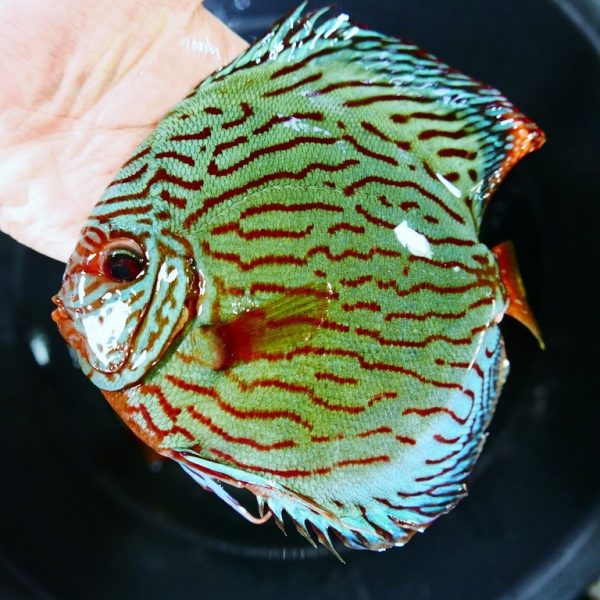
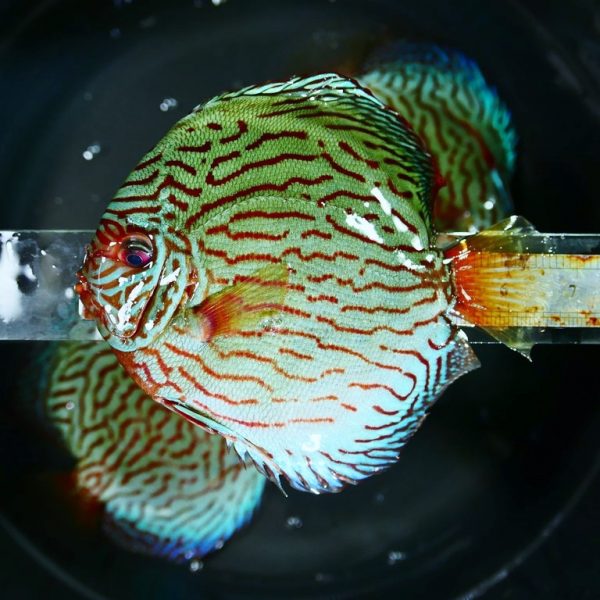
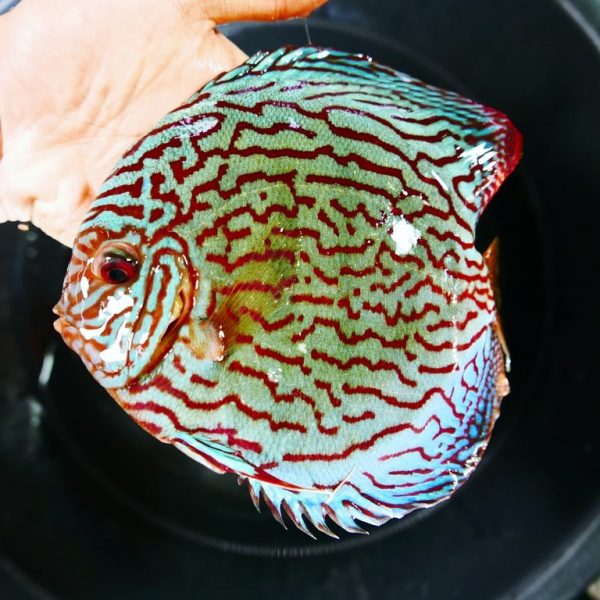
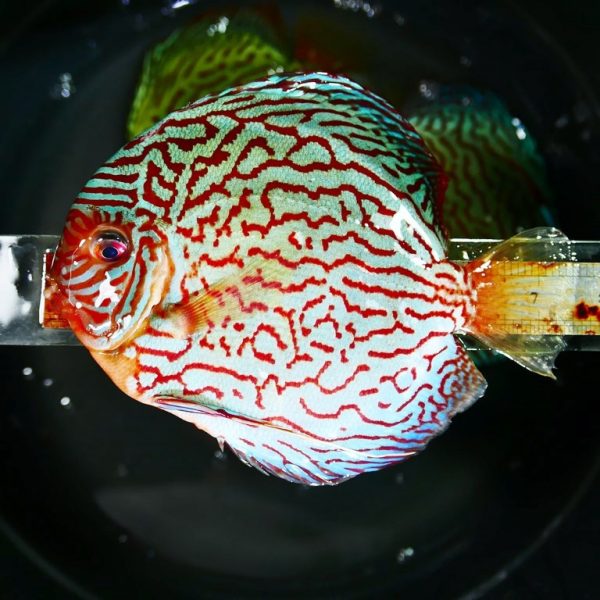
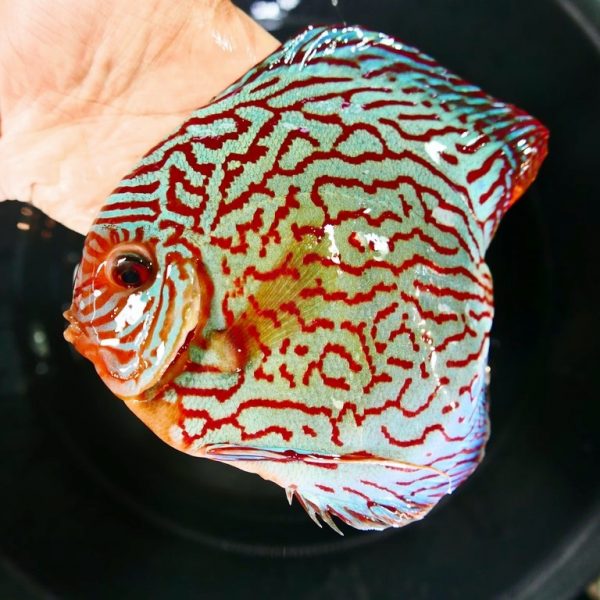
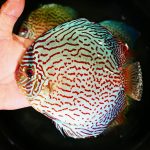
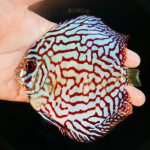
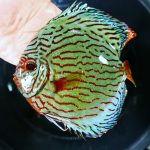
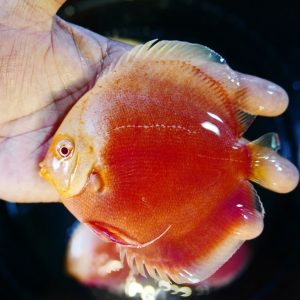
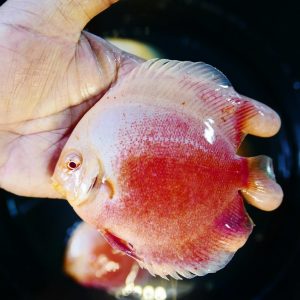
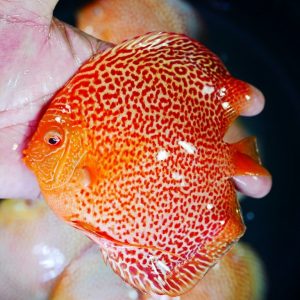
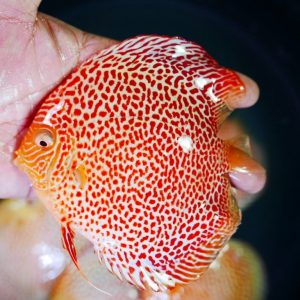
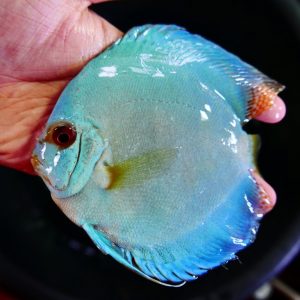
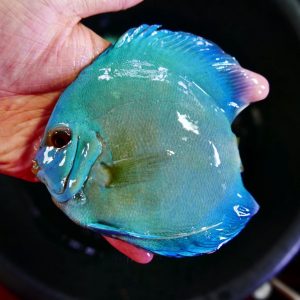
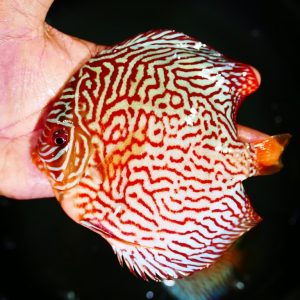
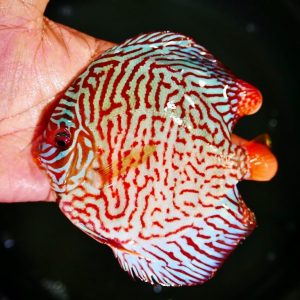
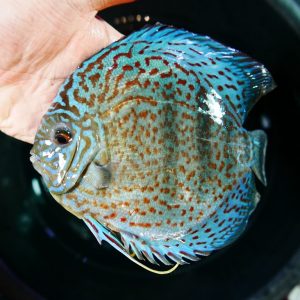
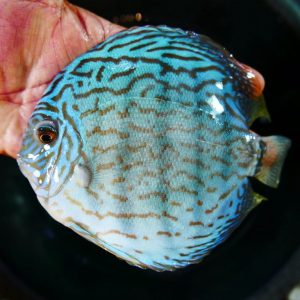
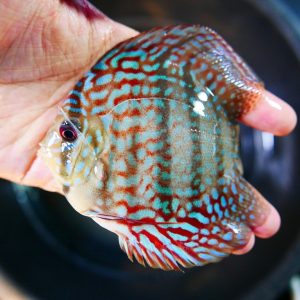
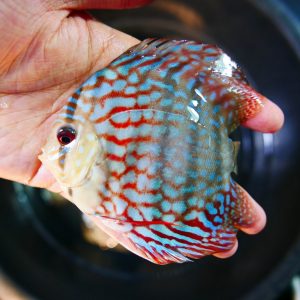
Fish are all alive and look healthy. Will monitor closely but think they made it. Thanks for checking.
Even as an almost 4 inch baby the green tint is there. It will be a beautiful adult.
Shipping was fast and well packaged!
Fish look great. Thanks, Michael I'll upload some photos and reviews in the next couple days.
Yes they all arrived and all in quarantine tank.
Hi Michael, the discus all arrived in great condition, and were actually eating on day 1. I am attaching a photo for your readers to see. My only question is that one of the Discus I ordered was a high bodied red leopard. Unless it looks not much like the photos, I am not sure that that is the one that I received. I can send you photos of all of the new fish, and you can let me know which one you think is the red leopard. (It could be the one in the center of the photo below.) But all in all, great selection again, thank you! Thanks, Steve From Michael: The fish in the center is indeed the leopard.
Hello Michael, I am sorry it took me awhile to write to back, but I was dealing with some personal matter my self, plus I wanted to see if the fishes will adjust. Well, now its been 10 days since the FedEx guy literally drop them on my door steps, day later delivered then it should be. So, the 3 small ones you send me are doing great from day one, they are eating and moving around fine. They are still in their quarantine tank. The big beautiful one, the German red Turquoise was swimming weird ups and downs from day one, then start hiding in the corner of the tank, behind the heater and NEVER see him eating any food, while the others smaller ones are eating.
I am hoping that he is able to get some leftovers scraps, but I don't know how long it will last without eating food!! Well, just yesterday find out that it was a PREGNANT female actually, and saw bunch of eggs on the suction cups behind the heater! Still , she is not eating and continue hiding?! What to do?! I didn't expect babies, and I am not ready to raise them. Anyway, I am worried about the well being of that adult female German Red Turquoise, who lay the eggs. I put some salt for aquariums, I read it's good for them, do you suggest that?! Here is photo, the Big Female Red Turquoise is on the corner, on the right. From Michael: Congrats on the babies. Please check out my breeding section in my Learning Center. I will reply to you directly via email regarding your other points.
They all seem to be doing well. Guessing the one just has two dots on his tail. Fish are absolutely gorgeous and so much savings compared to my local fish store.
This is the Brillant Blue discus with a tint o...More
This is the Brillant Blue discus with a tint of green. It's still too young to see it with the colors of the advertised pictures but you can still see the green hint on it in the photos and bright blues. This fish will be such a pretty blue green when its older, I'm excited!! Michael, has the best selection, variety, and quality of discus above anything else out there, it makes it so hard to narrow down which discus to choose.
These are accurately sized fish to what I ordered. Quality discus is here at this site and exceptional customer service as well. Being patient on your order will pay off, but don't be afraid to reach out to Michael on any concerns. His response is quick during business hours.
The pictures depict one fish. I want to include good pictures for the review as most reviews show a bunch and it's a guessing game which one you're wanting to actually see. I hope you find this helpful!
Thank you Michael!
I ordered many fishes before and from other places. They sell 2 inch fishes and still bigger than yours, you're not clear in measurements of the fish, so i think I can't do business with you anymore. From Michael: Fish was perfectly matched and sized. The website clearly states we measure from tip of nose to end of tail. Customer ordered a 3-3.5" fish, and he received exactly what he ordered.
Afternoon Michael, can you call me when u have a minute? I received my oder today, thank you. 6 out of 7 appear to be in good health, but 1 is not looking too good. Overall--good. I would make a future purchase. I found your website and general info/articles to be very helpful.